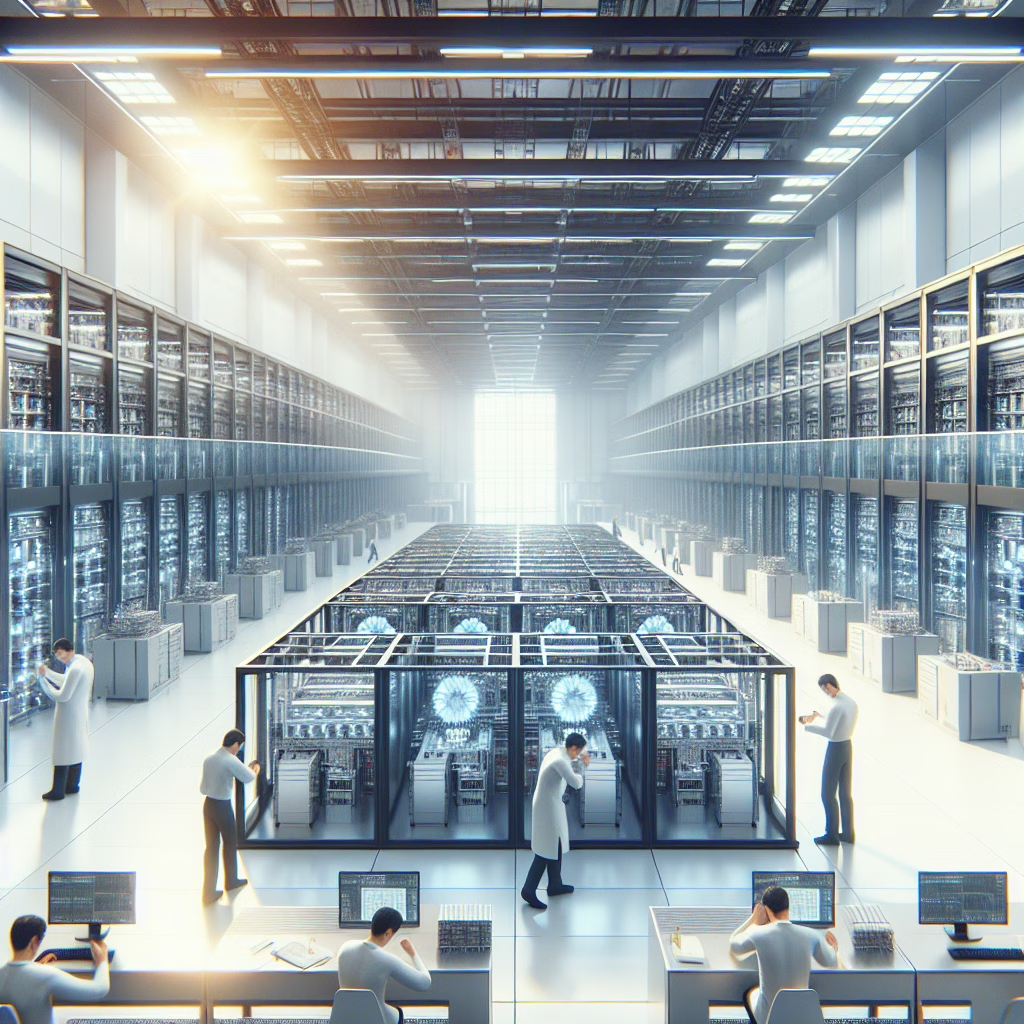Nvidia has set its sights on an ambitious goal: building AI supercomputers entirely in the USA. It’s like saying you want to make the best apple pie, but you refuse to use any apples that aren’t locally sourced. Sure, it sounds good on paper, but does it actually make a difference? In this article, we’ll dig into Nvidia’s plans and the potential impact on the AI landscape, while sharing a few chuckles along the way.
Nvidia’s Grand Vision for AI Supercomputers
Let’s face it: Nvidia isn’t just playing around. The company is one of the leading players in AI technology, and their ambitions are as big as their GPUs. Building AI supercomputers in the US could bolster local manufacturing jobs, ignite innovation, and possibly even save a few polar bears along the way. Who knew that making chips could be so noble?
But let’s not get too starry-eyed here. The reality is that, while having these supercomputers made domestically is a splendid idea, many experts are left scratching their heads about whether it really changes the game. After all, chips are chips, right? If they come from a factory down the street or across the globe, will they suddenly become more powerful by virtue of their origin?
The Great Debate: Domestic vs. Global Production
In today’s interconnected world, companies often source materials and labor from various countries to keep costs down and innovation flowing. So why is Nvidia pushing for homegrown AI supercomputers? Well, let’s examine a few reasons:
- National Security: In an age where cyber threats loom like dark clouds over our digital landscapes, creating AI supercomputers within US borders can help safeguard sensitive data. Think of it as building a moat around your castle—except instead of alligators, you have cutting-edge technology guarding your treasures.
- Job Creation: Building these machines locally means more jobs for engineers, technicians, and perhaps even a few coffee shop baristas who will fuel all those long nights of coding. Who wouldn’t want to sip artisanal lattes while developing world-changing algorithms?
- Innovation Hotspot: By concentrating efforts in the US, Nvidia aims to create an ecosystem that fosters collaboration among tech companies and universities. Picture a high-tech version of summer camp where everyone trades ideas instead of friendship bracelets.
However, while these points are valid, some folks still wonder if all this effort will truly result in groundbreaking advancements. Will a chip designed in Silicon Valley perform better than one crafted in Taiwan? Perhaps we need to consult an oracle—or maybe just stick with good ol’ engineering principles.
The Economic Implications of US-Made Supercomputers
Nvidia’s push for domestic production raises eyebrows (and some wallets). In theory, investing in local manufacturing could stimulate economic growth. But what about costs? Producing AI supercomputers in the US might lead to higher prices compared to importing them from countries with lower labor costs.
This is where it gets interesting: If Nvidia charges more for their domestically produced machines, will customers be willing to pay? It’s like buying organic avocados; sometimes you just want guacamole without breaking the bank! The real question remains: do consumers value the “Made in USA” label enough to fork over extra cash?
Pros and Cons of Domestic Production
It’s essential to weigh the benefits against the drawbacks.
- Benefits:
- Stronger national security.
- Boosting local economies and job markets.
- Enhanced innovation through local partnerships.
- Drawbacks:
- Higher production costs may deter consumers.
- Potentially slower times to market for new technology.
- Challenges in scaling production without losing quality.
The Future of AI Supercomputing
As we look ahead to 2025 and beyond, one thing is clear: AI supercomputing is here to stay. Whether made in America or elsewhere, these machines will continue to shape industries ranging from healthcare to entertainment.
Nvidia’s decision to go all-in on US production may inspire other tech giants to consider similar moves. It could spark a trend toward bringing more tech manufacturing back home—a bit like reuniting with an old friend after years apart.
In conclusion, while Nvidia’s ambition to build AI supercomputers entirely in the USA is commendable and may have some tangible benefits, let’s not forget that innovation knows no borders. As we push forward into this exciting era of technology, let’s embrace creativity from every corner of the globe—while enjoying our locally sourced coffee!
What do you think about Nvidia’s plans? Will building AI supercomputers in the USA make a real difference? Share your thoughts below!
Related: The Nvidia RTX 5060 Ti confirmed for April 16 launch
For further reading on tech advancements and their implications, check out this piece on AI-generated voices and its impact on security.

